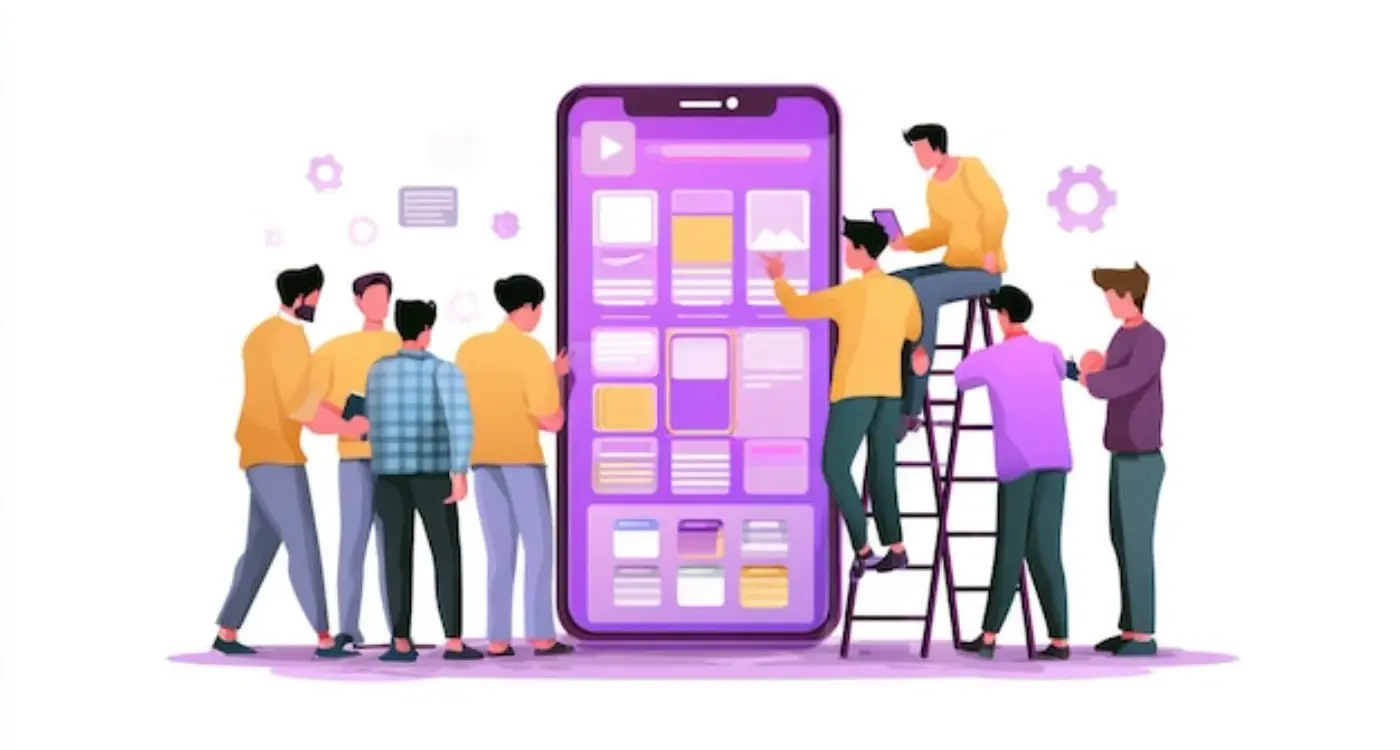Which Documentation Tools Keep Development Teams Aligned?
Development teams lose roughly 21 hours per week hunting for information that already exists somewhere in their organisation—but good luck finding it when you actually need it. I've watched talented developers spend entire afternoons digging through Slack channels, old emails, and abandoned Google Docs just to understand how a simple API endpoint works. It's mental, really, and completely avoidable.
After building mobile apps for hundreds of clients over the years, I can tell you that documentation isn't just about keeping notes—it's about keeping your team moving forward instead of constantly backtracking. The difference between a well-documented project and a poorly documented one? About three months of your life you'll never get back, and probably your sanity too.
You know what happens when documentation is scattered across fifteen different tools? New team members take forever to get up to speed, existing developers make the same mistakes repeatedly, and everyone starts building workarounds instead of following established patterns. I've seen projects grind to a halt because nobody could remember why certain technical decisions were made or how critical systems actually function.
Good documentation is like having a conversation with your future self—and making sure that conversation actually makes sense
The tools you choose for documentation can make or break your development workflow. Some platforms excel at technical specs but fail at collaborative editing. Others are brilliant for team wikis but rubbish for API documentation. Most teams end up with a frankenstein setup that creates more confusion than clarity. But here's the thing—finding the right combination of documentation tools isn't just possible, it's absolutely necessary if you want your development team to stay aligned and productive.
Why Documentation Matters for Development Teams
I've watched countless development projects fall apart because teams didn't document properly. It's honestly one of the biggest problems I see when working with clients—developers who think they'll remember everything, project managers who assume everyone's on the same page, and stakeholders who get frustrated when features don't match expectations.
Good documentation isn't just about writing things down; it's about creating a shared understanding that keeps everyone aligned. When I'm working on an app project, documentation serves as our single source of truth—from initial user stories right through to deployment notes and maintenance schedules.
What Happens Without Proper Documentation
The problems start small but snowball quickly. A developer leaves the team and takes all the knowledge about a particular API integration with them. QA can't test properly because they don't understand the expected behaviour. Clients change their minds about features because the original requirements weren't clear enough.
I've seen projects where teams spent weeks rebuilding functionality that already existed simply because nobody documented where to find it. It's a bit mad really—all that wasted time and budget could've been avoided with better documentation practices.
The Real Benefits of Getting It Right
When development teams document well, everything runs smoother. New team members can get up to speed faster, bugs get fixed quicker because the codebase is understood, and clients feel more confident because they can see clear progress against documented requirements.
- Faster onboarding for new developers
- Reduced debugging time and fewer critical errors
- Better client communication and expectation management
- Easier maintenance and future feature development
- Knowledge retention when team members move on
Documentation isn't overhead—it's infrastructure that supports everything else your development team does.
Choosing the Right Documentation Tool for Your Team
Right, let's talk about picking the right tool for your team—because honestly, this decision can make or break your documentation efforts. I've seen teams fall apart over badly chosen tools, and I've watched others thrive when they nail this choice.
The first thing you need to consider is your teams technical comfort level. If you're working with developers who live and breathe markdown, then tools like GitBook or Notion work brilliantly. But if you've got designers and project managers who just want to write without learning syntax? Well, you might want something more like Confluence or even good old Google Docs.
Size Matters (Team Size, That Is)
Small teams under 10 people can get away with simpler solutions. Notion handles everything from meeting notes to API docs quite well; large teams though—they need proper organisation, permissions, and search capabilities. That's when platforms like Confluence or Document360 start making sense.
Start with your teams existing workflow rather than forcing them to adapt to a new tool. If they're already using Slack, look for documentation tools that integrate well with it.
Budget is another big factor that people don't always think about upfront. Free tools like GitHub Wiki are great for open source projects, but once you need advanced features like analytics, custom branding, or enterprise security... well, the costs add up quickly. I always tell clients to budget for the tool they'll need in 18 months, not just today.
The key is finding something that your team will actually use consistently—because the best documentation tool in the world is useless if it sits empty.
Knowledge Management Platforms That Scale
When your development team grows beyond a handful of people, you quickly realise that basic documentation tools just won't cut it anymore. I've seen teams struggle with this transition—one day you're all sitting in the same room sharing knowledge over coffee, the next you've got developers across three time zones trying to figure out why the authentication service keeps throwing errors.
Knowledge management platforms are different from simple documentation tools because they're built to handle the complexity that comes with scale. We're talking about systems that can organise thousands of documents, manage user permissions across different teams, and actually help people find the information they need without spending half their day searching.
What Makes a Platform Actually Scale
The biggest mistake I see teams make? They choose a platform based on its features list rather than how well it handles growth. A platform that works beautifully for 10 people might completely fall apart when you hit 50 or 100 users. You need something that can handle multiple projects, different access levels, and—this is crucial—can integrate with all the other tools your team already uses.
Search functionality becomes absolutely critical at scale. When you've got hundreds of documents, wiki pages, and API references, people need to find answers fast. The best platforms use smart search that understands context, not just keyword matching.
Popular Platforms That Actually Work
Here's what I recommend based on team size and needs:
- Confluence - Best for teams already using Atlassian tools; handles complex permissions well
- Notion - Great all-in-one solution but can get sluggish with large databases
- GitBook - Perfect for technical teams who want documentation that feels like code
- Slab - Modern interface with excellent search, good for distributed teams
- Bookstack - Open source option that's surprisingly powerful for the price
The key is picking something your team will actually use consistently, not just the one with the most features.
Code Documentation and API Reference Tools
When you're building mobile apps, your code documentation isn't just about keeping track of what you've built—it's about making sure your team can actually work together without losing their minds. I've seen projects grind to a halt because developers couldn't figure out how existing APIs worked or what a function was supposed to do.
The tools that work best for mobile development teams are the ones that live close to your code. GitBook has become my go-to for API documentation because it connects directly with your repository and updates automatically when you push changes. No more outdated docs that nobody trusts! For inline code documentation, JSDoc for JavaScript projects and Swift's built-in documentation comments are brilliant—they generate reference materials right from your source code.
Tools That Actually Get Used
Postman isn't just for testing APIs anymore; its documentation features are genuinely useful for sharing endpoint specifications with your team. The mock server functionality means frontend developers can start building while backend work is still in progress. Swagger/OpenAPI is another solid choice, especially if you're working with REST APIs—it creates interactive documentation that developers can test directly in their browser.
Good code documentation should answer the 'why' not just the 'what'—anyone can read the code to see what it does, but understanding the reasoning behind decisions is what keeps teams aligned
For mobile-specific documentation, I've found that Gitiles works well for Android projects, while Xcode's built-in documentation compiler handles iOS documentation nicely. The key is choosing tools that fit naturally into your existing workflow rather than creating extra steps that people will skip when deadlines get tight.
Project Management Tools with Documentation Features
You know what I've learned after years of managing app development projects? The best documentation often lives right inside your project management tools. It sounds obvious when you say it out loud, but honestly, most teams still treat documentation like some separate thing they'll "get to later."
Tools like Notion, Clickup, and Monday.com have changed the game here. They're not just task trackers anymore—they're proper knowledge hubs where your project documentation can actually live and breathe alongside your development work. I mean, why would you want your user stories in one place, your technical specs in another, and your meeting notes scattered across three different apps?
Keeping Everything Connected
The magic happens when your documentation is directly linked to your tasks and sprints. When a developer picks up a user story, they should be able to see the original requirements, design mockups, and any technical notes right there. No hunting around for that PDF someone emailed two weeks ago.
Jira has actually gotten quite good at this—you can embed rich documentation directly into tickets, link related issues, and even maintain a knowledge base that connects to specific features. It's not the prettiest solution, but it works.
Real-Time Updates Matter
Here's where project management tools really shine: they update in real time. When requirements change (and they always do), everyone sees the updates immediately. No more "didn't you get my email?" conversations during stand-ups.
The key is choosing tools that your whole team will actually use. If your developers hate the interface, they won't update the documentation. If your project managers can't easily track progress, they'll revert to spreadsheets. Find that sweet spot where documentation feels like a natural part of the workflow, not an extra burden.
Collaborative Writing and Wiki Solutions
Wikis have been around forever—well, it feels that way when you're building apps! But honestly, they're still one of the best ways to keep development teams on the same page. I mean, when you've got developers, designers, and project managers all working on the same mobile app, having a central place where everyone can contribute and edit documentation is genuinely helpful.
The beauty of wiki solutions is that they break down those silos that naturally form in development teams. Your iOS developer can update a page about API changes, your UX designer can add notes about user testing results, and your QA team can document their testing procedures—all in the same space. No more hunting through email chains or Slack messages to find that one important detail about how push notifications should behave.
Popular Wiki Platforms for Development Teams
Confluence is probably the most common choice I see with larger teams, especially those already using Atlassian tools. Its integration with Jira is pretty solid, and you can link documentation directly to specific tickets or sprints. For smaller teams or those wanting something more lightweight, Notion has become really popular—it's like a wiki that had a baby with a project management tool.
GitHub Wiki is another option thats often overlooked. If your team's already living in GitHub for code reviews and version control, having your documentation right there makes sense. Sure, it's not as fancy as other solutions, but sometimes simple works best.
Set up page templates for common documentation types like API endpoints, feature specifications, and troubleshooting guides. This keeps your wiki organised and makes it easier for team members to contribute consistently.
The key with any wiki solution is getting your team to actually use it. That means making contributing as frictionless as possible and showing the value early on.
Setting Up Documentation Standards and Workflows
Right, so you've picked your documentation tool—but that's just the beginning, isn't it? Setting up proper standards and workflows is where the magic actually happens. I've seen teams pick brilliant tools then watch them fail spectacularly because nobody bothered to establish clear guidelines about how to use them.
First things first: create a documentation style guide. This doesn't need to be War and Peace, but it should cover the basics. What's your tone? How do you structure headings? When do you use screenshots versus code examples? I always tell teams to start simple—you can always add more rules later, but removing them once people have got used to chaos? That's much harder.
Creating Your Documentation Workflow
Your workflow needs to answer one simple question: who does what and when? Here's what works for most development teams:
- Developers document new features as they build them (not after!)
- Someone reviews documentation before code goes live
- Product managers update user-facing docs when features change
- Regular audits to remove outdated information
- Clear ownership for different types of documentation
The biggest mistake I see? Making documentation feel like punishment. If your workflow adds hours of bureaucracy to every small change, people will find ways around it. Keep it lightweight but consistent.
Getting Everyone On Board
Here's the thing—even the best workflow means nothing if your team won't follow it. Start by documenting something that actually helps people right now. Maybe it's that deployment process everyone always asks about, or the API endpoints that never seem to work the way people expect. Once people see the value, they'll start contributing naturally. And honestly? Lead by example. If you want good documentation, write good documentation yourself first.
Measuring Documentation Success and Team Adoption
Look, I'll be honest—measuring whether your documentation tools are actually working can feel a bit like trying to catch smoke. But after years of watching teams struggle with scattered knowledge and missed deadlines, I've learned there are some clear signs that tell you if your documentation strategy is paying off.
The most obvious indicator? How often your team actually uses the documentation tools you've put in place. If people are still asking the same questions in Slack that were answered in your wiki last month, you've got a problem. I track this by looking at page views, search queries within the documentation, and—perhaps more tellingly—the frequency of repetitive questions in team channels.
What the Numbers Actually Tell You
User engagement metrics are brilliant for spotting patterns. Are people contributing content regularly, or is it just one person updating everything? When team members start adding their own documentation without being asked, that's when you know adoption is genuine. I also look at how quickly new team members can get up to speed—if onboarding time drops significantly, your knowledge management is working.
Good documentation reduces the time between having a question and finding the answer from hours to minutes
Beyond the Basic Metrics
But here's the thing—the real success isn't just in the numbers. It's in those moments when developers can solve problems independently, when project handovers happen smoothly, and when technical decisions have clear reasoning behind them that everyone can access.
The best measurement? When documentation becomes invisible because it's so naturally integrated into your team's workflow. If people stop complaining about not knowing where to find information, you've probably nailed it. And trust me, after dealing with countless development teams over the years, that silence is golden.
After years of working with development teams across different industries, I can tell you that documentation isn't just about keeping records—its about keeping your team's sanity intact. When you've got developers jumping between projects, new team members starting every few months, and stakeholders asking "how does this work again?" for the hundredth time, good documentation becomes your lifeline.
The tools we've covered in this guide each serve their purpose, but here's what I've learned: the best documentation tool is the one your team actually uses. You can have the fanciest platform in the world, but if it sits empty because nobody wants to update it, you're back to square one. I've seen teams succeed with simple markdown files in GitHub just as much as I've seen others thrive with comprehensive knowledge management platforms.
What matters most is consistency and commitment from the whole team. Documentation works when it becomes part of your development process, not an afterthought. Start small, pick one tool that fits your current workflow, and build the habit before you worry about perfect organisation or advanced features.
The mobile app projects I've worked on that had the smoothest handovers, the fewest "why did we build it this way?" moments, and the happiest development teams all had one thing in common: they treated documentation as part of the product, not a chore. When you get that mindset shift right, keeping your development team aligned becomes much less of a daily battle and more of a natural part of how you build great software together.
Share this
Subscribe To Our Learning Centre
You May Also Like
These Related Guides

What Strategies Work Best for Managing App Development Teams?

What's The Difference Between Scrum And Kanban For Mobile Apps?



